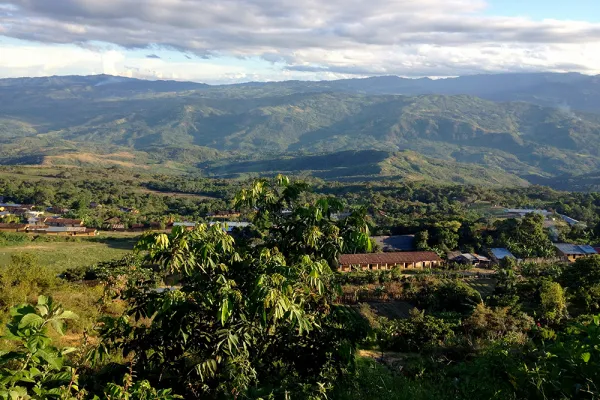Student Wins Prestigious Grant for Sustainable Agriculture in Peru
Research & Inquiry

Published April 21, 2014
Before her trip to Peru on a Smith International Experience Grant last summer, Haisley Wert ’16 had traveled outside the United States only once—to Canada. “And that was before you needed a passport,” she says.
Now, with the help of a $10,000 Davis Projects for Peace grant, she will head back to Peru in June to manage the construction of four biochar ovens to create terra preta, a sustainable soil mixture that honors ancient tradition and offers an alternative to the slash-and-burn agriculture that has been practiced by the indigenous Kichwa-Lamistas in the Upper Amazon region for centuries. Biochar fertilizes soil and reduces harmful gas emissions.
“I hope the project will be transformative for families and their lives in the community,” Wert says. Because of depleted soil, “Currently, every family has to establish a new plot of land every one to four years with the slash and burn agriculture. When people don’t have to move or depend on anyone else for soil, the sense of place and community will increase.”
According to Stacie Hagenbaugh, director of Smith’s Lazarus Center for Career Development, the Davis grant is highly competitive. “Each year, the center receives approximately 20 applications,” Hagenbaugh said, “and no more than two can be selected from Smith to advance to the Davis Projects for Peace foundation for final consideration. Haisley has a deep understanding of the region, its agricultural challenges and the limits of what [the Sachamama Center] can address. She built her proposal on those elements in a very thoughtful and intelligent manner, which made it rise to the top of the pile.”
Wert, who will return from Peru in early August, is working on the project in partnership with the Sachamama Center for BioCultural Regeneration, a nonprofit organization founded by Frédérique Apffel-Marglin a professor emerita in the anthropology department at Smith and visiting professor in the College of the Environment at Wesleyan. Wert stayed at the center while traveling on the earlier Smith grant.
“The center is a great connection with the communities there,” she says. According to Wert, the project will bring an array of benefits including slowing deforestation and, since terra pretaabsorbs carbon dioxide, reducing greenhouse gasses.
According to Wert, terra preta was traditionally used by the indigenous people of the region, allowing them to sustain large, stable communities. Use of the mixture of organic matter, biochar, microorganisms and broken ceramics was largely lost, she says, following the arrival of Spanish colonizers in the 1500s.
A Latin American studies major, Wert was recently accepted for a concentration in community engagement and social change, with a focus on environmental justice. She says that part of the inspiration for her project is the Kichwa-Lamista’s belief in a reciprocal relationship with the natural world.
“In their worldview,” she says, “all the plants have spirits who are very much alive and communicative and are affected by what we do and can affect us as well.”
Although she acknowledges that there are challenges ahead, and no guarantee that the use of terra preta will be fully adopted by the communities she seeks to help, Wert says there is local support for the project already. She is hopeful that it will engender “a positive transformation.”
Founded by international philanthropist Kathryn W. Davis on the occasion of her 100th birthday, the Davis Projects for Peace is designed to “support and encourage today’s motivated youth to create and test their own ideas for building peace,” according to the Projects for Peace website.